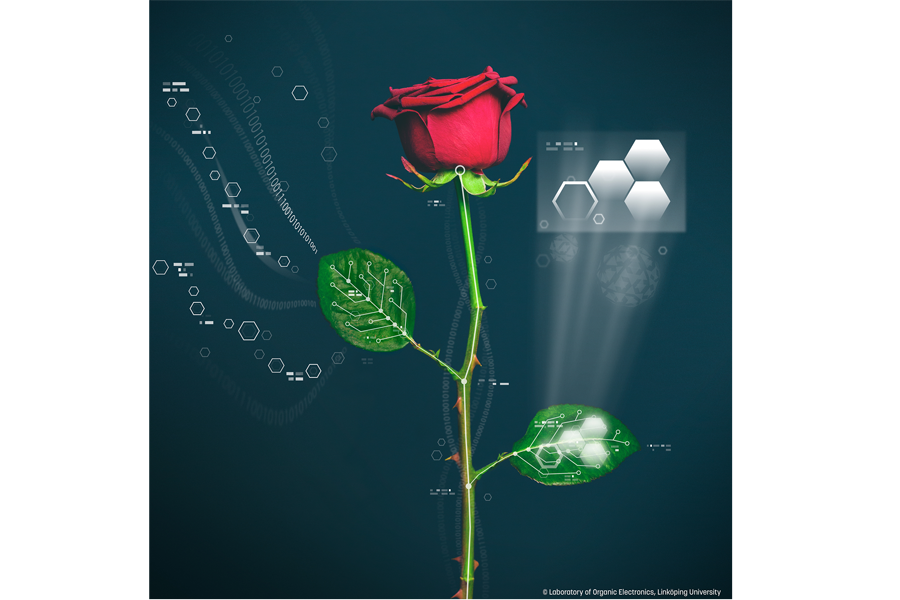Beautiful circuits: The dawn of the cyborg rose
Loading...
Researchers at Linköping University in Sweden have merged electronic circuitry with the vascular system of living plants for the very first time.
“As far as we know, there are no previously published research results regarding electronics produced in plants. No one's done this before," Magnus Berggren, director of the Strategic Research Centre for Organic Bioelectronics and Professor of Organic Electronics at Linköping University, said in a press release.
The study was performed at the Laboratory of Organic Electronics (LOE) at Linköping University, which has examined the potential for applying electronics to plants since the 1990s. In 2012, funding from the Knut and Alice Wallenberg Foundation allowed Dr. Berggren to expand the program's research.
In the study, published Friday in the journal Science Advances, the scientists augmented the photosynthetic process of roses using an electrically conductive polymer solution called PEDOT. They introduced the polymer into the roses’ stems by soaking them in derivatives of the PEDOT solution and then recorded the results.
It took several tries and different combinations, but when the scientists soaked the roses in a PEDOT derivative called PEDOT-S:H, small wires with an electronic charge began to form along the roses’ xylems, or vascular tissues.
Next, the researchers used vacuum technology to apply a different PEDOT derivative, called PEDOT:PSS–NFC, to the roses' leaves. Once the leaves were filled with the electrically conductive material, the researchers tested whether or not the roses' leaves could or would change color electronically, in the same way that the petals of a white flower will change color when its stem is placed in pink or orange-colored water.
They succeeded. The scientists discovered that plants are capable of carrying an electric charge, and a fairly stable one at that.
"[A] constant current... can be maintained for extended periods of time," the researchers wrote in the study.
There also appeared to be few ill effects for the roses: they lived as long as they normally would without the presence of a foreign substance, dying after a few days.
The scientists are optimistic that their discovery could have several future applications, including answering questions about how plants store and transfer energy.
“Previously, we had no good tools for measuring the concentration of various molecules in living plants. Now we'll be able to influence the concentration of the various substances in the plant that regulate growth and development. Here, I see great possibilities for learning more,” study co-author Ove Nilsson, professor of plant reproduction biology and director of the Umeå Plant Science Center, said in the release.
"Now we can really start talking about 'power plants' – we can place sensors in plants and use the energy formed in the chlorophyll, produce green antennas, or produce new materials. Everything occurs naturally, and we use the plants' own very advanced, unique systems," Berggren said.








